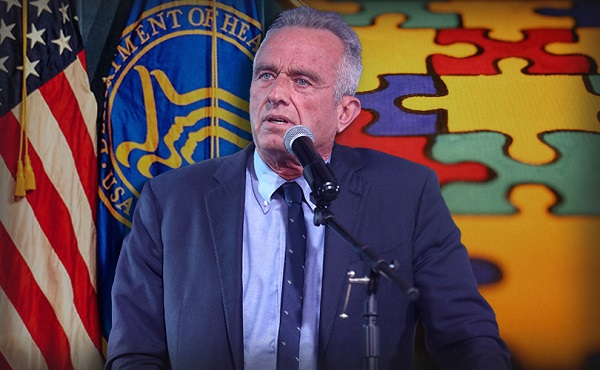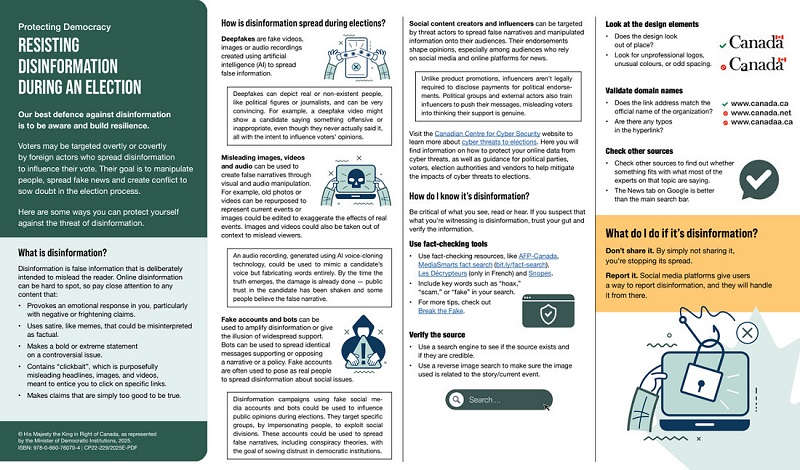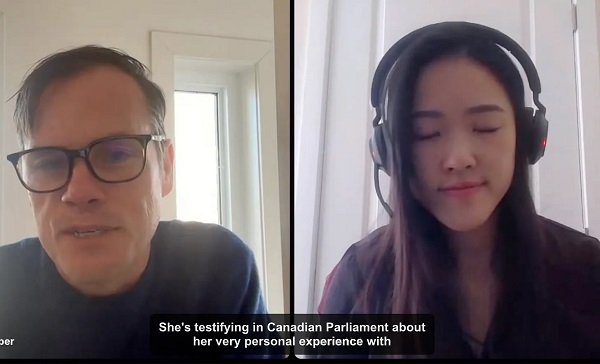International
Media Suffers Complete MELTDOWN Over USAID

Reflect on this for a moment. Van Jones literally argued that the Chinese Communist Party is more reliable for humanitarian aid than the U.S. government—all because Trump dared to add oversight to a bloated, unaccountable agency.
President Trump has moved to dismantle USAID, merging it into the State Department under Marco Rubio to enforce oversight, stop taxpayer dollars from fueling corruption, and ensure U.S. aid serves American interests.
As expected, the media and Democrats are in full meltdown mode, framing Trump’s crackdown on wasteful spending as a “coup.”
This particular take came from MSNBC’s Joy Reid, who convinced herself that reining in USAID corruption was equivalent to overthrowing a government.
“If this were happening in any other country right now, I promise you, I’d be on the air calling it a coup,” she declared.
Join 100K+ Substack readers and 1.5 million 𝕏 users who follow the work of Vigilant Fox. Subscribe to Vigilant News for exclusive stories you won’t find anywhere else.
In an equally ridiculous media moment, former White House Press Secretary Jen Psaki suggested that Elon Musk targeted USAID because he was “uncomfortable” with how the agency combatted “corruption.”
“[USAID] not only leads on humanitarian assistance around the world but also works to combat corruption and foreign aid programs. I kind of see how that could make Elon Musk a bit uncomfortable,” Psaki said.
Perhaps Psaki is just panicking because Musk and Trump just shut down one of the Deep State’s favorite laundering machines.
After all, a bombshell FOIA request by the White Coat Waste Project revealed that Fauci’s NIAID and USAID funneled over $40 million in U.S. taxpayer funds to a Wuhan scientist researching bat coronavirus emergence—who later became “patient zero” for COVID-19.
The funding, which ended in 2019, backed risky gain-of-function research at the Wuhan Institute of Virology, raising major concerns that U.S. tax dollars may have helped create the infamous COVID-19 virus that triggered mass lockdowns, forced vaccinations, and an unprecedented global health crackdown.

The most hysterical take of the night came from CNN’s Van Jones, who claimed that Donald Trump is telling the rest of the world to “DIE” by adding oversight to USAID.
“Donald Trump says, ‘We don’t care. You go die.’ That’s the message from the United States government,” Jones declared, claiming that cutting off its massive foreign aid programs will lead to “people dying in very large numbers around the world.”
Jones warned that Trump’s actions against USAID open the door for China to say, “At least we’re a stable government who’s not going to leave you out here to die.”
Reflect on this for a moment. Van Jones literally argued that the Chinese Communist Party is more reliable for humanitarian aid than the U.S. government—all because Trump dared to add oversight to a bloated, unaccountable agency.
Now, that’s a very bold statement.
The only moment of clarity from the mainstream press came when Scott Jennings methodically schooled his fellow CNN panelists as they vainly tried to defend USAID.
“There is a difference between smart soft power and dumb spending by the leftwing ideologues who inhabit this bureaucracy,” Jennings quickly pointed out.
“There is a difference between soft power and soft stupidity. So whether you’re funding like DEI musicals in some country or transgender surgery somewhere or whatever, that is not what most Americans would say is an effective part of U.S. foreign policy,” he reminded everyone.
The media’s meltdown proves Elon Musk and Trump hit the Deep State right where it hurts.
When oversight is called a “coup,” and the people fixing corruption are painted as villains, you know the regime is in full panic mode.
Because if USAID was just another harmless aid agency, why are they melting down like their slush fund just got nuked?

Thanks for reading! If you enjoyed this post, subscribe for more reports like this one.
Health
Trump admin directs NIH to study ‘regret and detransition’ after chemical, surgical gender transitioning

From LifeSiteNews
Ample evidence has surfaced in recent years to warrant the White House’s investigation
The Trump administration has made a break with the long-standing government policy of near 100% affirmation of the transgender industry’s efforts and has directed the National Institutes of Health (NIH) to study the negative impacts on mental and physical health of so-called “gender transitioning” on adults and children.
The Department of Health and Human Services (HHS), which oversees NIH, “has been directed to fund research on a few specific areas” regarding “chemical and surgical mutilation” of children and adults,” according to multiple reports.
In particular, the Trump administration wants to investigate “regret and detransition following social transition as well as chemical and surgical mutilation of children and adults” and “outcomes from children who have undergone social transition and/or chemical and surgical mutilation.”
The new directives to the biomedical agency were reportedly included in an email to several NIH directors from then-Acting NIH Director Matthew Memoli shortly after Trump took office.
“This is very important to the President and the Secretary (of HHS, Robert F. Kennedy Jr.),” Memoli wrote.
Unhappy about the Trump administration’s move to uncover the hidden, shadowy side of the burgeoning transgender industry, pro-transgender activists working within the medical research community were quick to criticize the move.
The term “chemical or surgical mutilation” was “deeply offensive,” said Harry Barbee, assistant professor at the Johns Hopkins Bloomberg School of Public Health.
“This terminology has no place in serious scientific or public health discourse,” Barbee complained. “The language has been historically used to stigmatize trans people. Even the phrase(s) ‘regret’ and ‘detransition’ can be weaponized.”
“What they’re looking for is a political answer not a scientific one,” Adrian Shanker, who served as deputy assistant secretary for health policy at HHS under President Biden, told NPR. “That should be an alarm for everyone who cares about the scientific integrity of the National Institutes of Health.”
While those who derive a living focusing on developing and expanding the transgender industry resent the implication that there might be a dark side to their efforts, more than ample evidence has surfaced in recent years to warrant the White House’s investigation on behalf of vulnerable Americans, especially children, who have shown to be highly susceptible to what has been called the “transgender contagion.”
Many oft-ignored detransitioners attest to the physical and mental harm of reinforcing gender confusion as well as to the bias and negligence of the medical establishment on the subject, many of whom take an activist approach to their profession and begin cases with a predetermined conclusion in favor of “transitioning.”
A study published earlier this year in the Oxford Journal of Sexual Medicine found that undergoing sex-change surgery, far from reducing depression rates among the gender dysphoric, substantially increased rates not only of depression but of anxiety, suicidal ideation, and substance use disorders.
This study, along with scores of others conducted in recent years, explodes the media-enforced narrative that so-called “gender affirming” medical treatments are necessary for the happiness and well-being of the gender-confused.
Short video displays deep regret after sex-change treatments and surgery
A short video – just 34 seconds long – displays the extreme distress and anxiety of those who resorted to surgery and hormone treatments to “transition” earlier in their lives, only to experience deep regret later on.
The video presents a cautionary tale, dispelling the myth that parents need to allow their children to transition in order to be happy.
“Society is marketing a horrifically harmful, fashionable new trend to children that brings about a life of depression, confusion, drug use and STD’s,” the caption reads. “Please inform yourselves and help your children.”
Former transgender: ‘Regret’ and ‘detransitioning’ are the new trans frontier
Walt Heyer, a former “transgender woman” who for many years has maintained a global outreach to those who experience sex change regret, has been sounding the alarm about the one-size-fits-all approach of the trans medical industry for years.
“The science of surgical interventions is not yet settled regarding the long-term consequences of transgender therapy,” Heyer noted during a 2017 Symposium at the University of Hong Kong. “As of today, we don’t have any objective, conclusive research.”
“I feel ‘regret’ and ‘detransitioning’ will become the next transgender frontier,” Heyer said. “So be prepared.”
“There is an ever-increasing number of former transgenders, like myself, who are now requesting gender reversals,” he said.
“As a former female transgender, I can see the exploding social trend that has developed into a significant transgender contagion —now even an epidemic— that has captivated young children as well as young adults who have come to believe they’re the opposite sex on just the weight of social media and feelings … in some cases taking drastic measures to change their bodies,” Heyer said.
“More and more, I get reports from families telling me that their teen children suddenly came out as a transgender without any prior history of discomfort with their biological sex,” said Heyer, describing what has come to be called “rapid onset gender dysphoria.”
“Current psychotherapeutic practice involves the immediate affirmation of the young person’s self-diagnosis,” he lamented.
Heyer explained that many surgically transformed men and women suffer from a complex number of sexual, emotional, psychiatric and psychological comorbid disorders such as autogynephilia, dissociative disorders like schizophrenia, body dysmorphic disorder, and a host of other undiagnosed disorders that were not resolved by the recommended therapy of changing genders.
Heyer spoke from his own experience as he explained that if such disorders were considered and treated adequately, sexual transitioning would probably be greatly reduced. The role of these “comorbid” conditions tends to surface later as trans individuals begin to question their decision to transition to the opposite sex.
“We find this out from the ‘regretters,’” Heyer said. “We don’t find it out early on. We find it out afterward when they’re seeking help … and we find out that these comorbid disorders existed early on.”
A significant body of evidence now shows that “affirming” gender confusion carries serious harms, especially when done with impressionable children who lack the mental development, emotional maturity, and life experience to consider the long-term ramifications of the decisions being pushed on them or full knowledge about the long-term effects of life-altering, physically transformative, and often irreversible surgical and chemical procedures.
Studies find that more than 80 percent of children suffering gender dysphoria outgrow it on their own by late adolescence, and that “transition” procedures fail to resolve gender-confused individuals’ heightened tendency to engage in self-harm and suicide – and even exacerbate it, including by reinforcing their confusion and neglecting the actual root causes of their mental strife.
Autism
Autism Rates Reach Unprecedented Highs: 1 in 12 Boys at Age 4 in California, 1 in 31 Nationally

 Popular Rationalism
Popular Rationalism
 James Lyons-Weiler
James Lyons-Weiler
The U.S. Centers for Disease Control and Prevention (CDC) has released its 2025 report from the Autism and Developmental Disabilities Monitoring (ADDM) Network, and the findings are alarming: autism spectrum disorder (ASD) now affects 1 in 31 American 8-year-olds—the highest rate ever recorded.
For boys, the numbers are even more staggering: 1 in 20 nationwide, and 1 in 12.5 in California. The report, which tracks children born in 2014, reveals a crisis growing in severity and complexity, yet broadly unacknowledged in the national discourse.
Autism has become a public health crisis of urgent concern,” the report states plainly. And yet, government agencies have offered no new national action plan, and media coverage remains anemic.
Rapidly Accelerating Trends
In just two years, autism prevalence among 8-year-olds rose 17%, from 1 in 36 to 1 in 31. This is not an anomaly. Since the CDC began tracking autism in children born in 1992, prevalence has increased nearly fivefold, defying theories that attribute the rise solely to broader diagnostic criteria or increased awareness.
The Impact of SB277 on Autism Prevalence in California
In 2015, California enacted Senate Bill 277 (SB277), which went into effect on July 1, 2016. This legislation eliminated the state’s personal belief exemption (PBE) for childhood vaccinations, making it one of only three U.S. states at the time—alongside Mississippi and West Virginia—to require full compliance with the CDC-recommended vaccine schedule for school entry, except in cases of formally approved medical exemption.
While the primary intent of SB277 was to increase vaccination rates and try to reduce outbreaks of communicable diseases like measles, its implementation has coincided with a continued—and arguably accelerated—rise in autism spectrum disorder (ASD) diagnoses in the state. Data drawn from the California Department of Developmental Services (CDDS) and CDC’s Autism and Developmental Disabilities Monitoring (ADDM) Network offer a timeline of prevalence rates before and after the law’s enactment:
Between 2014 and 2017, ASD prevalence among young children in California increased from 0.86% to 1.18%—a 37.2% increase in just three years. By 2020, according to CDC ADDM surveillance, 4.5% of 8-year-olds in California had an autism diagnosis—the highest prevalence among all U.S. monitoring sites.
Percent Increase Post-SB277 (2016 to 2020):
From 1.08% (2016) to 4.5% (2020) = 316.7% increase
This dramatic rise cannot be definitively attributed to SB277 alone, but its temporal proximity to the policy change—which effectively compelled full vaccine schedule compliance across all demographic groups—raises serious questions. Notably, this increase occurred within California’s already robust autism tracking infrastructure (CDDS), known for conservative case identification that focuses on children with moderate to severe impairment requiring lifelong services.
While correlation does not imply causation, the magnitude and timing of California’s autism surge post-SB277 should compel further independent investigation, particularly given that:
- SB277 removed opt-out options for thousands of previously unvaccinated or selectively vaccinated children;
- The increase is most visible in 4-year-old cohorts tracked soon after the law took effect;
- California’s autism rates now exceed 1 in 12 for boys.
In light of these findings, California may now serve not only as a terrible national model for vaccine compliance—but also as a bellwether for unintended consequences of compulsory public health policy.
Alarming Trends in IQ
Contrary to such assumption of ASD leading to giftedness, the ADDM data also show that the proportion of children with higher IQs is actually decreasing, while the share of children with intellectual disability (IQ ≤ 70) has risen. Nearly 2 out of 3 children (64%) diagnosed with autism in this cohort fall below the IQ 85 threshold, indicating moderate to severe impairment.
These are hard realities that many will find unacceptable. Still, nationally, nearly 40% (39.6%) of 8-year-olds with ASD had IQ ≤ 70. Another 24.2% had borderline IQ (71–85). 36.1% had IQ > 85.
Since autism has a motor neuron impairment, demonstrated IQ may be an inexact measure of actual intelligence, as Spellers The Movie has taught the world.
From a clinical viewpoint, the ADDM report’s data quietly demolish the idea that autism incidence increases are driven by mild or high-functioning cases. Since the early 2000s, the proportion of cases with average or high IQ has dropped, while those with intellectual disability have surged. This trend—now reaching nearly 64%—indicates that autism’s rise is not a matter of greater sensitivity in diagnosis. Rather, it appears we are witnessing a real increase in biologically significant, disabling neurodevelopmental injury.
Reversal of Historic Ethnodemographic Trends
The report presents data on racial disparity that now represents a reversal:
Asian/Pacific Islander (3.75%), Black (3.63%), Hispanic (3.58%), and Multiracial (3.27%) 8-year-olds are now more likely to be identified with autism than White children (2.77%)
This is a complete reversal of pre-2018 trends, where White children had the highest identification rates. Children from low-income neighborhoods had higher prevalence of ASD than those from high-income areas in several states, e.g., Utah and Wisconsin
The California Signal: A Harbinger of What’s to Come?
San Diego, California, stands out as a sentinel site—and a warning. According to Supplementary Table 8 of the report, 8.87% of 4-year-old boys in California are diagnosed with autism. Further breakdown shows even more troubling disparities:
- Black boys: ~12%
- Hispanic boys: ~10.5%
- Asian boys: ~9%
- White boys: ~5.3%
These numbers imply that 1 in 8 to 1 in 10 young boys of color in California may carry an autism diagnosis by the time they reach second grade.
Are Environmental Triggers Driving This?
One overlooked possibility is that cumulative exposures—including the full CDC childhood vaccine schedule, lockdown-era developmental disruption, and coexisting toxicants—may act in concert to dysregulate immune and neurological development. California’s 2016 vaccine mandate removed all non-medical exemptions, making full compliance unavoidable for most working families. This timing intersects directly with birth years showing the steepest autism rises. If these policy changes are contributing, even partly, to this epidemiological shift, they demand urgent investigation—not blind defense.
The demographic disparities further reinforce the environmental hypothesis. Among 4-year-olds, autism rates among children of color now exceed those of White children by 40–90%, depending on the group and region.
Public Health Policies Under Scrutiny
Importantly, California’s strict mandate—which bars children from school or daycare without full vaccination—creates a uniquely high-exposure environment for children whose families cannot afford alternatives. These children are also more likely to be Black or Hispanic, compounding the already sharp disparities now seen in ASD prevalence. In San Diego’s 2018 birth cohort, over 1 in 10 Black and Hispanic boys have an autism diagnosis at age four. The notion that this simply reflects “better identification” strains all credibility.
Additionally, pandemic-era lockdowns, prolonged school closures, and extended masking requirements in California may have played a compounding role in disrupting normal developmental pathways for toddlers and young children during formative years.
The Cost of Inaction
The fiscal and societal burden of autism is already astronomical. A 2020 economic model projected U.S. autism-related costs could exceed $5.5 trillion per year by 2060 if trends continue unmitigated. That estimate did not anticipate the rapid acceleration seen in this latest data.
Your tax dollars have funded years of futile autism genetics research that has not led to any prevention, mitation or treatment, and any given individual genes from genome-wide association studies (GWAS) still explain only a sliver of ASD heritability. Meanwhile, evidence continues to build around plausible environmental and iatrogenic mechanisms—oxidative stress, mitochondrial dysfunction, and aluminum adjuvants, among others—without serious investment in confirming or ruling them out. If the CDC were tracking causation with the same rigor it tracks prevalence, we might already have answers.
A Turning Point?
Public health leadership now faces a choice: double down on statistical obfuscation, or finally confront the rising tide of childhood neurological injury. The tools exist—retrospective cohort comparisons, machine learning to detect risk patterns, causal inference modeling of environmental exposures, and most critically, honest, open-ended research. The CDC and NIH must stop chasing only genetic ghosts and start investigating the real, tangible environmental shifts that mirror this crisis in time.
For decades, the CDC, NIH, and IOM have promoted the idea that the rise in autism is primarily diagnostic, while excluding or downplaying environmental and iatrogenic hypotheses. But the current data—showing accelerating prevalence, worsening severity, and growing racial disparities—make this position untenable. It is now clear that narrative closure, not causal closure, has been guiding public messaging. The refusal to explore vaccine adjuvants, prenatal toxic exposures, chronic immune activation, and regulatory policy failures reflects a broken system more committed to preserving public confidence than discovering the truth.
In a striking statement during an April 2025 Cabinet meeting, Secretary of Health and Human Services Robert F. Kennedy Jr. declared,
“By September, we will know what has caused the autism epidemic and we’ll be able to eliminate those exposures.”
The promise represents a historic shift in federal tone—marking the first time in decades that a sitting health official has committed to openly investigating all plausible causes of autism, including environmental and iatrogenic exposures.
Popular Rationalism is a reader-supported publication.
To receive new posts and support my work, consider becoming a free or paid subscriber.
-

 2025 Federal Election2 days ago
2025 Federal Election2 days agoASK YOURSELF! – Can Canada Endure, or Afford the Economic Stagnation of Carney’s Costly Climate Vision?
-

 Alberta2 days ago
Alberta2 days agoMade in Alberta! Province makes it easier to support local products with Buy Local program
-

 2025 Federal Election22 hours ago
2025 Federal Election22 hours agoEuthanasia is out of control in Canada, but nobody is talking about it on the campaign trail
-

 2025 Federal Election9 hours ago
2025 Federal Election9 hours agoMEI-Ipsos poll: 56 per cent of Canadians support increasing access to non-governmental healthcare providers
-

 2025 Federal Election17 hours ago
2025 Federal Election17 hours agoAI-Driven Election Interference from China, Russia, and Iran Expected, Canadian Security Officials Warn
-

 2025 Federal Election2 days ago
2025 Federal Election2 days agoCSIS Warned Beijing Would Brand Conservatives as Trumpian. Now Carney’s Campaign Is Doing It.
-

 2025 Federal Election2 days ago
2025 Federal Election2 days agoInside Buttongate: How the Liberal Swamp Tried to Smear the Conservative Movement — and Got Exposed
-

 illegal immigration1 day ago
illegal immigration1 day agoDespite court rulings, the Trump Administration shows no interest in helping Abrego Garcia return to the U.S.















